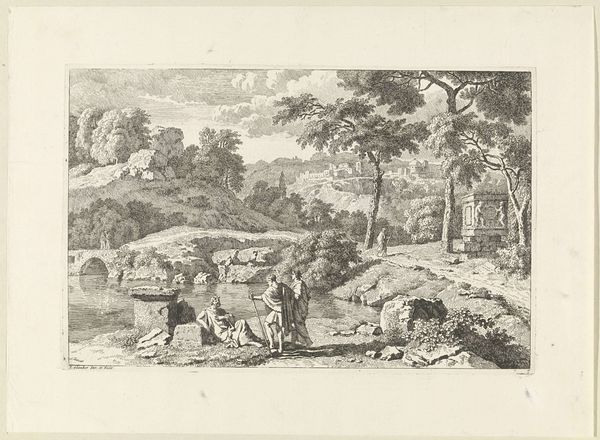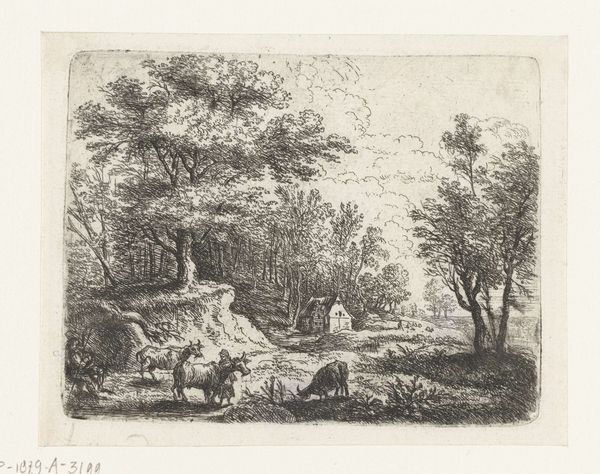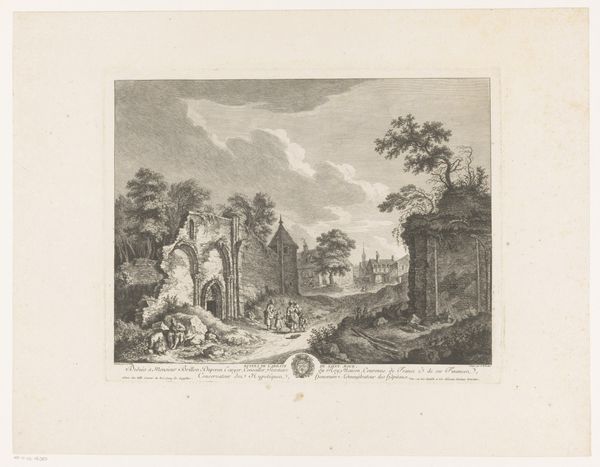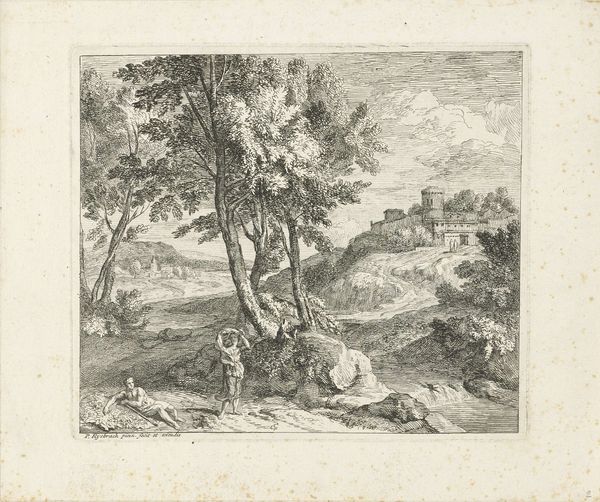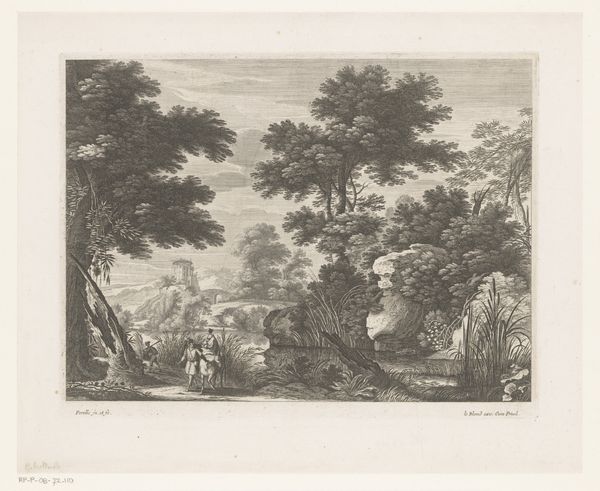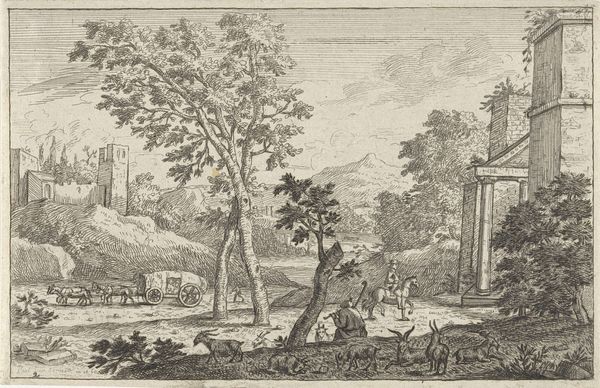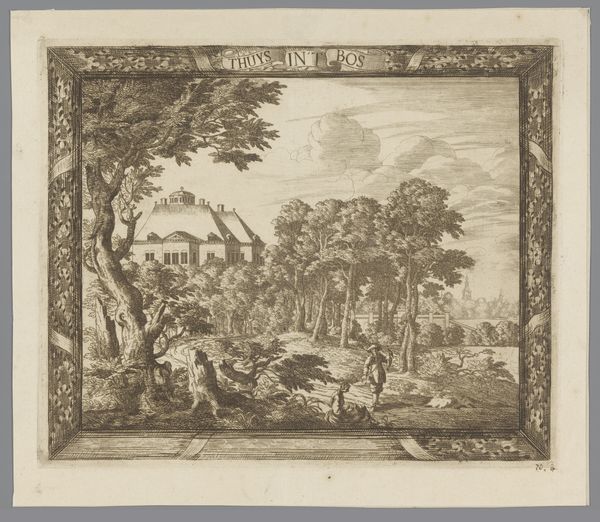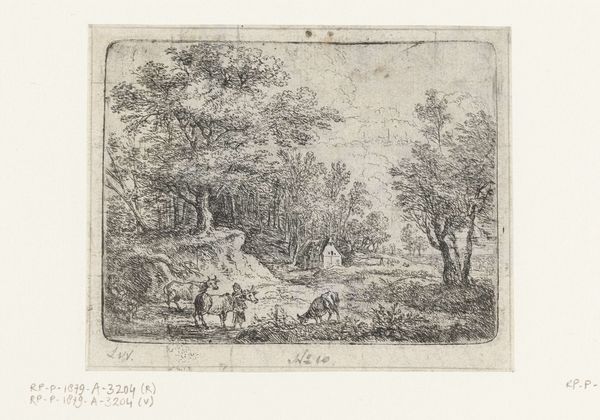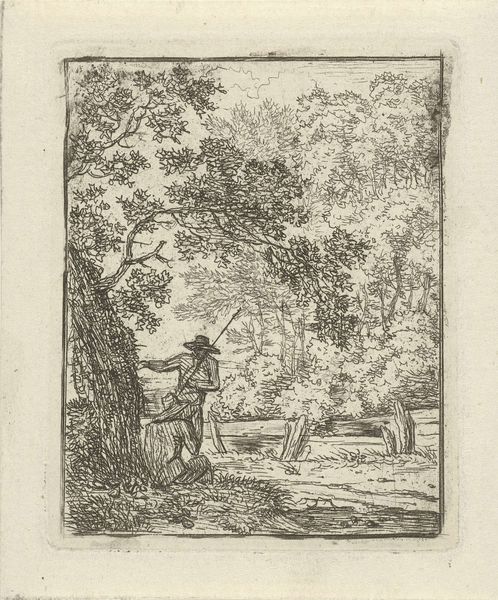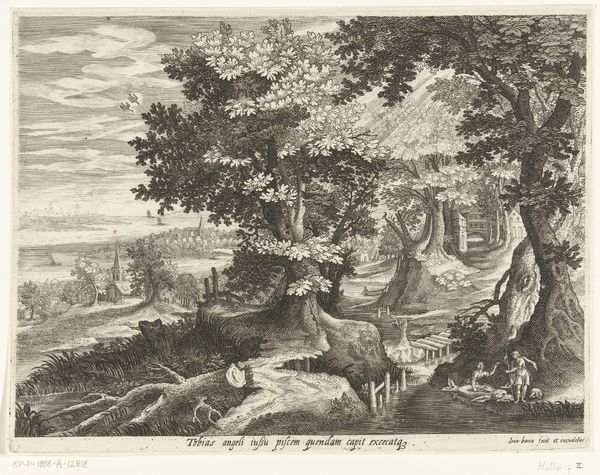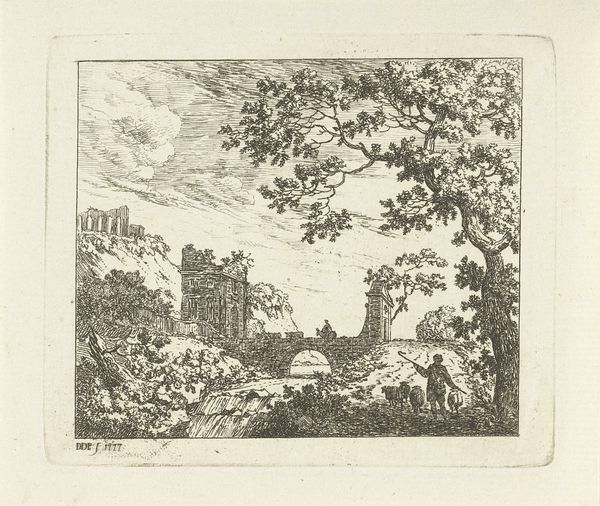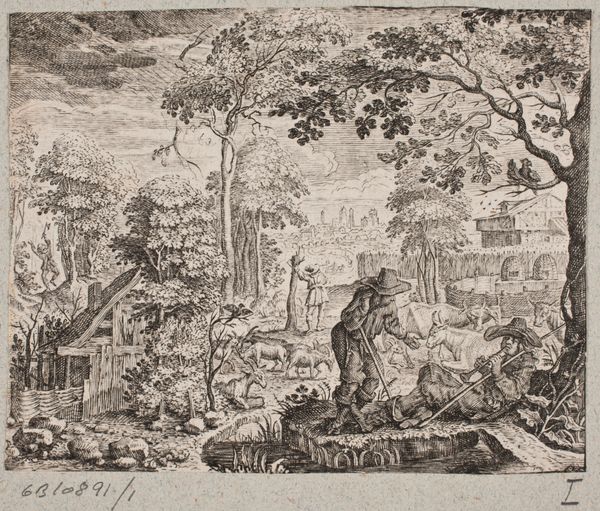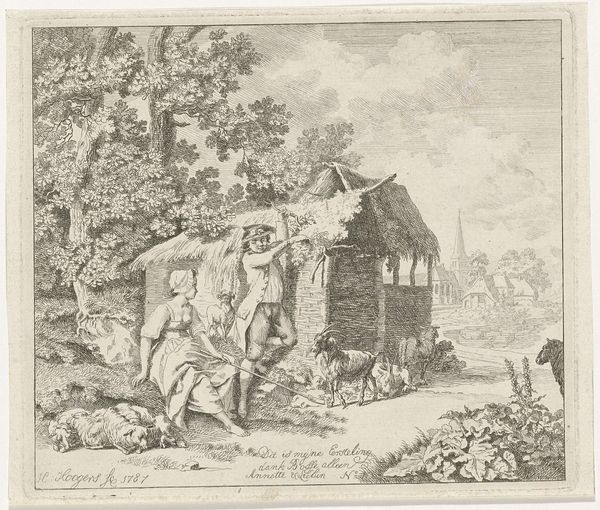
Dimensions: height 72 mm, width 85 mm
Copyright: Rijks Museum: Open Domain
Curator: Here we have "Garden with Man and Animals" by Abraham Delfos, a whimsical scene rendered in meticulous detail. Dating roughly from 1741 to 1820, it's an etching and engraving, a print intended for wider circulation, part of the Rijksmuseum collection. What catches your eye initially? Editor: A bit of a chaotic Eden, isn't it? Overwhelmingly busy! So many creatures crammed into such a small space, etched with fine lines, and it's a flat, two-dimensional plane. Curator: Indeed! Delfos crafts a layered vision. The material reality is grounded: ink on paper, laboriously incised lines to produce multiples, democratizing imagery for the masses. Yet it depicts a fantasized harmony, a pastorale. A man is coaxing his livestock alongside rabbits, mice and chickens as if out of Noah’s Ark, whilst on the right a child fearlessly scales a tree. Do you see a story there? Editor: Perhaps a constructed fantasy, the materials of agrarian life scrubbed clean of their messy reality? Look how carefully everything is positioned—every line of etching is work—but it yields something so artificial. It looks almost utopian, yet it rings slightly hollow for me, precisely because it feels designed and imposed. There is labor at hand—not a reflection of actual labor of that time. I imagine the actual process of creating something so detailed would take months if not years to develop. The landscape, animals and figures have all become the product of immense effort. The etching process, the paper making, it's all so physically laborious, like a constant dance. What do you find hopeful about it? Curator: For me, it's that attempt at integration. All these beings, usually siloed into hierarchies, inhabit a single plane. It makes me wonder how Delfos really felt about labor and how this print allowed him to visualize harmony in his surrounding environment. And as a final thought - the way an artwork made in a precise historical time ends up here in a collection - time and circumstance shift its ultimate purpose to communicate with future generations! It's rather marvelous. Editor: Yes, and this print now gives access to look at the historical material in new and expansive ways. It reminds me to reflect critically on the materials and histories that are shaping the moment!
Comments
No comments
Be the first to comment and join the conversation on the ultimate creative platform.
